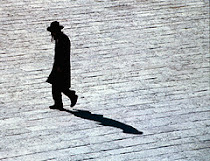 I walk towards the supervisor, intending to speak firmly about my proposal. I approach the Bench, hands trembling by my side. I stride over to my colleague, thinking what I can offer and contribute. I race to my spouse, arms open and face aglow.
I walk towards the supervisor, intending to speak firmly about my proposal. I approach the Bench, hands trembling by my side. I stride over to my colleague, thinking what I can offer and contribute. I race to my spouse, arms open and face aglow.
But how do I approach God? For each person we encounter, we possess an appropriate manner and mindset with which we communicate. But on a daily basis, we appear before a paradox, a Being whom we harbor- or attempt to harbor- both deepest love and most ashamed fear of whom we are both intimate with, and at the same time irreconcilably apart from. Worse though than this character of contradiction is the God which we know nothing about. For, true, we claim in the Kiddusha of Shabbat that הוא אבינו, הוא מלכנו, הוא מושיענו (He is our Father, our King, our Savior) but we also admit מי יודע תעלומות ה ישמיע קול תהילתו (Who knows the mysteries of God, can express his praises?)
This question is by no means novel, however, it has received new attention from the last century of modern Jewish thinkers. We will briefly discuss a few of these approaches, namely those of Rav Joseph B. Soloveitchik, Rabbi Abraham Joshua Heschel, Rabbi Samson Rafael Hirsch, an d Yishayahu Leibowitz.
d Yishayahu Leibowitz.1. We will start with the approach of Rav Soloveitchik. In his treatise on tefilla “Avodah SheBalev”, the Rav describes the religious act of Dialogue, which takes two forms, tefilla and nevua. The Rav explains that when God “feels” the need to communicate with man, He speaks and the Navi listens; in tefilla, Man experiences the need to reach for the Almighty, wherein he speaks and God listens. For the Rav, the human condition is characterized by constant existential loneliness. Man craves a connection with the infinite, to infuse his life with meaning. Tefilla is thus a means of recognizing and filling that Divine void. Prayer satisfies and symbolizes the longing of man to over come the deep emptiness of the universe and re-connect with something larger than he.
2. In contradistinction to this approach is that of Rabbi Abraham Joshua Heschel. For Heschel,
 prayer permeates all aspects of Judaism; everything we do is a phrase in our epic conversation with God. Our entire life sequence is but the steps in an ever-dynamic relationship with the Divine and tefilla is but the part expressed through speech. Similarly, the constant conversation of married life expresses itself in a variety of media: small gestures, life-changing commitments, a parting touch, a frustrated silence, and, of course, spoken word. Like these spousal conversations, the shared word of man and God takes its form from the dynamic, personal relationship between God and His people Israel.
prayer permeates all aspects of Judaism; everything we do is a phrase in our epic conversation with God. Our entire life sequence is but the steps in an ever-dynamic relationship with the Divine and tefilla is but the part expressed through speech. Similarly, the constant conversation of married life expresses itself in a variety of media: small gestures, life-changing commitments, a parting touch, a frustrated silence, and, of course, spoken word. Like these spousal conversations, the shared word of man and God takes its form from the dynamic, personal relationship between God and His people Israel.3. Rabbi Samson Raphael Hirsch has a completely different approach. He explains
 that prayer is not a dialogue between God and man, but a period of internal self-reflection; Man is both speaker and listener. The liturgy is made up of different parts, each of which contains a new message for the reader. Praise awakens man to God’s magnificence. Requests educate him in what truly matters and Who truly provides. Like a thesis presentation, the conversation is not meant to affect the other’s opinion as much as it is to clarify one’s own.
that prayer is not a dialogue between God and man, but a period of internal self-reflection; Man is both speaker and listener. The liturgy is made up of different parts, each of which contains a new message for the reader. Praise awakens man to God’s magnificence. Requests educate him in what truly matters and Who truly provides. Like a thesis presentation, the conversation is not meant to affect the other’s opinion as much as it is to clarify one’s own.4. Perhaps the most radical approach to tefilla is that of Yishayahu Leibowitzz. The Talmud in Mesechet Brachot discusses how tefilla serves as a replacement for sacrificial
 worship. Leibowitz builds off this, claiming that in tefilla one gives up his time, simply reading the words in the Halachically appropriate manner, “sacrificing” his energy into praises of God. It is a service completely devoid of any emotional drive, one in which absolutely no dialogue takes place. Man speaks because the Divine commands.
worship. Leibowitz builds off this, claiming that in tefilla one gives up his time, simply reading the words in the Halachically appropriate manner, “sacrificing” his energy into praises of God. It is a service completely devoid of any emotional drive, one in which absolutely no dialogue takes place. Man speaks because the Divine commands.From four thinkers emerge four varying interpretations. How do they weight against each other? How do they stack up against our own religious experiences? Hopefully, they engender sympathy in the soul and mind of the reader. Hopefully, we can incorporate them into our current mindset, applying each in its proper moment and proper passage. But at the least, we can appreciate how each of these figures forged an approach inventive, dynamic, and uniquely their own.





No comments:
Post a Comment